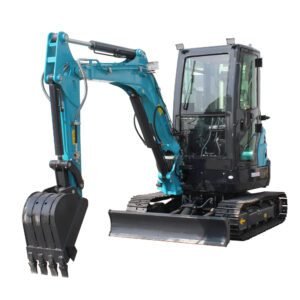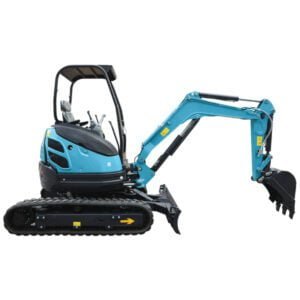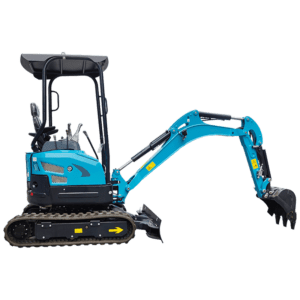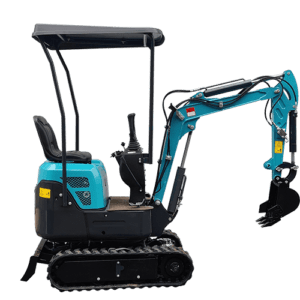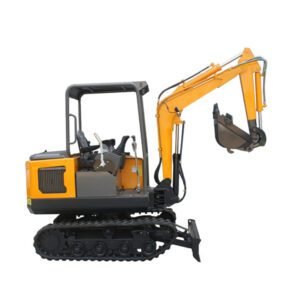Correo electrónico: [email protected] WhatsApp: 8618266768780
Qué buscar al inspeccionar una miniexcavadora en venta
Introducción
Al considerar la compra de una miniexcavadora para la venta, es esencial realizar una inspección exhaustiva para asegurarse de que está invirtiendo en una maquinaria confiable y eficiente. Esta guía tiene como objetivo brindarle información completa sobre qué buscar al inspeccionar una miniexcavadora en venta, asegurándole que tome una decisión informada.
Integridad exterior y estructural
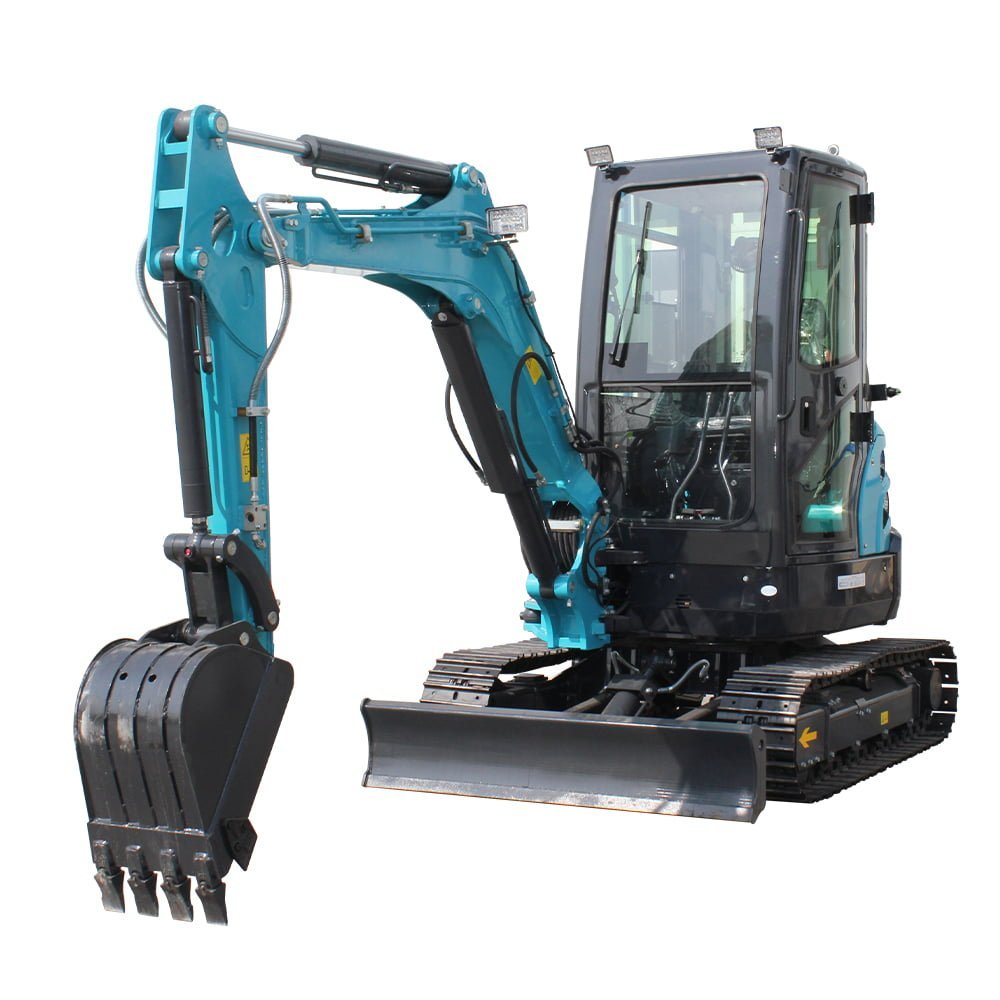
Inspección del cuerpo
El primer paso para inspeccionar una miniexcavadora a la venta es comprobar su integridad exterior y estructural. Busque signos de desgaste, óxido, abolladuras y cualquier daño en el chasis. Estos podrían indicar cómo se utilizó y se mantuvo la máquina.
Orugas y tren de aterrizaje
Las orugas y el tren de rodaje son componentes fundamentales de una miniexcavadora. Compruebe si hay desgaste excesivo en las orugas, los rodillos y las ruedas guía. El desgaste desigual puede indicar problemas de alineación o un uso inadecuado.
| Componente | Comprobación de estado | Notas |
|---|---|---|
| Pistas | Desgaste | Busque grietas o rajaduras |
| Rodillos | Rotación suave | Debe girar sin ruido |
| Ociosos | Tensión adecuada | Compruebe si hay daños |
Sistema hidráulico y cilindros
Comprobación de fugas
El sistema hidráulico es el elemento vital de una miniexcavadora, ya que impulsa sus funciones principales y le permite realizar tareas pesadas. Al inspeccionar una miniexcavadora a la venta, una de las primeras cosas que debe verificar es si el sistema hidráulico tiene fugas. Las fugas hidráulicas pueden afectar significativamente el rendimiento de la máquina y dar lugar a reparaciones costosas.
Comience por inspeccionar visualmente todas las mangueras, accesorios y conexiones hidráulicas. Busque cualquier signo de fugas de líquido, como manchas húmedas, goteos o charcos de líquido hidráulico. Preste mucha atención a las áreas alrededor de la bomba hidráulica, las válvulas de control y los cilindros. Incluso las fugas pequeñas pueden indicar problemas potenciales, por lo que es esencial revisar minuciosamente cada componente.
Examen de cilindros hidráulicos
Los cilindros hidráulicos son fundamentales para el movimiento de la pluma, el brazo y el cucharón. Inspeccione los cilindros para detectar cualquier signo de daño o desgaste. Busque rayones, abolladuras o corrosión en las varillas de los cilindros, ya que pueden comprometer los sellos y provocar fugas. Extienda y retraiga completamente los cilindros para verificar que funcionen sin problemas y escuche si hay ruidos inusuales que puedan indicar daños internos.
Funcionamiento suave
Probar el funcionamiento del sistema hidráulico es fundamental para garantizar que la miniexcavadora funcione de manera eficiente. Encienda la máquina y opere los controles hidráulicos para probar los movimientos de la pluma, el brazo y el cucharón. Estos componentes deben moverse con suavidad y sin vacilaciones. Cualquier movimiento brusco o irregular puede indicar problemas con la bomba hidráulica, fluido contaminado o aire en las líneas hidráulicas.
Prueba de presión
Si es posible, realice una prueba de presión en el sistema hidráulico. Esto implica utilizar un manómetro para medir la presión hidráulica en varios puntos del sistema. Compare las lecturas con las especificaciones del fabricante para asegurarse de que se encuentren dentro del rango aceptable. Las lecturas de presión bajas o inconsistentes pueden indicar problemas con la bomba hidráulica o las válvulas de control.
Niveles y calidad de los líquidos
Mantener los niveles adecuados de líquido hidráulico es esencial para el rendimiento del sistema. Revise el depósito de líquido hidráulico para asegurarse de que esté lleno hasta el nivel correcto. Los niveles bajos de líquido pueden provocar cavitación, lo que puede dañar la bomba y otros componentes.
Además de los niveles de líquido, evalúe la calidad del líquido hidráulico. El líquido debe estar limpio y libre de contaminantes como suciedad, agua o partículas metálicas. El líquido hidráulico contaminado puede causar daños graves a los componentes hidráulicos y reducir la eficiencia del sistema. Si el líquido tiene un aspecto oscuro, lechoso o contiene partículas, es posible que sea necesario reemplazarlo o enjuagar el sistema.
| Componente | Tarea de inspección | Notas |
|---|---|---|
| Mangueras hidráulicas | Compruebe si hay fugas y daños | Busque manchas húmedas y grietas. |
| Cilindros hidráulicos | Inspeccionar si hay desgaste y corrosión. | Extender y retraer para un funcionamiento suave. |
| Bomba hidráulica | Compruebe si hay fugas y ruidos | Escuche sonidos inusuales |
| Válvulas de control | Prueba de funcionamiento suave | Asegúrese de que la presión sea constante |
| Fluido hidráulico | Comprobar niveles y calidad | Limpio, libre de contaminantes. |
Inspección de filtros y sellos
Los sistemas hidráulicos tienen filtros para eliminar los contaminantes del fluido. Inspeccione estos filtros para asegurarse de que estén limpios y funcionen correctamente. Un filtro obstruido o sucio puede restringir el flujo de fluido y reducir la eficiencia del sistema. Reemplace cualquier filtro que parezca sucio u obstruido.
Los sellos y las juntas del sistema hidráulico también son fundamentales. Inspeccione estos componentes para detectar signos de desgaste, grietas o daños. Los sellos desgastados pueden provocar fugas y reducir la presión, lo que afecta el rendimiento general de la miniexcavadora.
Prueba de la hidráulica auxiliar
Muchas miniexcavadoras vienen equipadas con sistemas hidráulicos auxiliares para operar accesorios como martillos, barrenas y pinzas. Pruebe el sistema hidráulico auxiliar para asegurarse de que funcione correctamente. Conecte una herramienta auxiliar y póngala en funcionamiento para comprobar que funciona de forma suave y potente. Los sistemas auxiliares deben proporcionar una presión y un caudal constantes para operar los accesorios de forma eficaz.
Evaluación del desempeño general
Después de completar la inspección del sistema hidráulico, evalúe el rendimiento general de la miniexcavadora. Asegúrese de que todas las funciones hidráulicas funcionen sin problemas y sin ninguna pérdida de potencia perceptible. Un sistema hidráulico bien mantenido debe proporcionar un rendimiento constante y confiable, lo que permite que la miniexcavadora realice una variedad de tareas de manera eficiente.
Motor y tren motriz
Estado del motor
Examine el motor para detectar signos de fugas de aceite, corrosión y ruidos inusuales durante el funcionamiento. Un motor bien mantenido es fundamental para la longevidad de su miniexcavadora.
Niveles y calidad de los líquidos
Revise todos los niveles de líquidos, incluidos el aceite, el refrigerante y el líquido hidráulico. La calidad de estos líquidos puede brindarle una idea de qué tan bien se ha mantenido la máquina.
| Tipo de fluido | Comprobación de nivel | Control de calidad |
|---|---|---|
| Aceite de motor | Nivel adecuado | Limpio, sin residuos |
| Refrigerante | Nivel adecuado | Libre de óxido y residuos. |
| Fluido hidráulico | Nivel adecuado | Claro, sin partículas |
Cabina y controles
Estado interior
Al inspeccionar la cabina y los controles de una miniexcavadora a la venta, comience por evaluar el estado general del interior. Busque signos de desgaste, daños o componentes faltantes. El asiento debe ser cómodo y ajustable, y brindar el soporte adecuado durante períodos prolongados de funcionamiento. Verifique si hay rasgaduras, grietas o desgaste significativo en la tapicería del asiento, ya que estos pueden ser indicadores de un uso intensivo.
Las palancas de control, los pedales y los interruptores son fundamentales para el funcionamiento sin problemas de la miniexcavadora. Asegúrese de que todas las palancas de control se muevan libremente y vuelvan a su posición neutra al soltarlas. Los pedales deben responder y no presentar desgaste excesivo. Inspeccione los interruptores y botones del panel de control y confirme que estén intactos y funcionen.
Visibilidad y ergonomía
Una cabina bien diseñada debe ofrecer una excelente visibilidad al operador. Siéntese en el asiento del operador y evalúe la visibilidad desde todos los ángulos. Asegúrese de que las ventanas estén limpias y sin grietas ni obstrucciones. Una visibilidad adecuada es fundamental para la seguridad y la eficiencia en el lugar de trabajo.
La ergonomía desempeña un papel importante en la comodidad y la productividad del operador. Compruebe la disposición de los controles para asegurarse de que estén al alcance de la mano y ubicados de forma intuitiva. Los componentes ajustables, como el asiento y los reposabrazos, deben permitir al operador personalizar su posición de trabajo para lograr la máxima comodidad.
Componentes eléctricos
Los componentes eléctricos dentro de la cabina deben inspeccionarse minuciosamente. Encienda la miniexcavadora y pruebe todos los sistemas eléctricos, incluidas las luces, la bocina y los limpiaparabrisas. Asegúrese de que el panel de instrumentos y las pantallas de visualización funcionen correctamente y brinden información precisa. Los componentes eléctricos defectuosos pueden provocar problemas operativos y pueden indicar problemas subyacentes con el cableado o la electrónica de la máquina.
Control del clima
Las funciones de control del clima, como la calefacción y el aire acondicionado, pueden afectar significativamente la comodidad del operador, especialmente en condiciones climáticas extremas. Pruebe los sistemas de calefacción y refrigeración para asegurarse de que funcionan correctamente. Un control del clima adecuado no solo mejora la comodidad, sino que también ayuda a mantener la concentración y la productividad durante largas horas de trabajo.
Caracteristicas de seguridad
La seguridad siempre debe ser una prioridad al inspeccionar una miniexcavadora a la venta. Verifique la presencia y el estado de los dispositivos de seguridad, como cinturones de seguridad, botones de parada de emergencia y mecanismos de bloqueo de seguridad. Estos dispositivos son esenciales para prevenir accidentes y garantizar la seguridad del operador.
Además de estas comprobaciones, tenga en cuenta la limpieza y el orden general de la cabina. Una cabina limpia y bien mantenida suele reflejar el cuidado y la atención general que se le da a la máquina. Al inspeccionar minuciosamente la cabina y los controles, puede asegurarse de que la miniexcavadora proporcione un entorno operativo seguro, cómodo y eficiente.
Mejorando la experiencia del operador
Dada la creciente complejidad de las tareas y la demanda de precisión en las operaciones, las miniexcavadoras modernas suelen venir equipadas con funciones avanzadas destinadas a mejorar la experiencia del operador. Busque características como pantallas de diagnóstico avanzadas, telemática integrada e interfaces de control fáciles de usar. Estas mejoras pueden mejorar significativamente la eficiencia y la facilidad de operación, especialmente para tareas que requieren alta precisión.
Prueba operativa
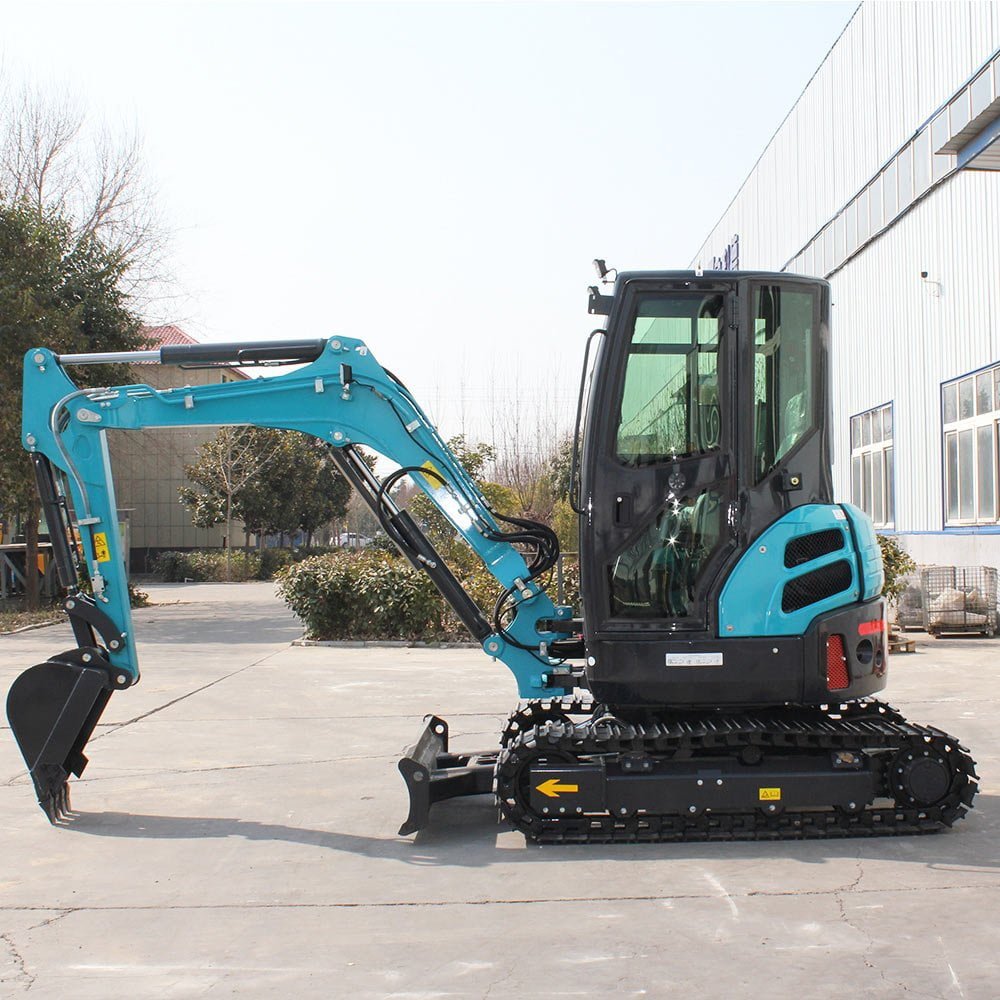
Puesta en marcha de la máquina
La prueba de funcionamiento es una de las partes más importantes de la inspección de una miniexcavadora a la venta. Comience por poner en marcha la máquina. Preste mucha atención a cómo arranca el motor: debe hacerlo de manera suave y sin vacilaciones. Escuche si hay ruidos inusuales, como golpes, traqueteos o vibraciones excesivas, que podrían indicar problemas subyacentes. Además, observe las emisiones de escape; el humo negro o azul puede ser una señal de problemas en el motor o de un mantenimiento deficiente.
Prueba funcional
Una vez que el motor esté funcionando sin problemas, proceda a probar la gama completa de funciones de la miniexcavadora. Esto incluye operar la pluma, el brazo y el cucharón para asegurarse de que se muevan con fluidez y respondan con precisión a las entradas de control. Preste atención al rendimiento del sistema hidráulico; no debe haber demoras ni vacilaciones en los movimientos y los controles deben sentirse precisos y sensibles.
Prueba de la pluma y el brazo
Extienda y retraiga por completo la pluma y el brazo varias veces, observando el rango de movimiento y verificando si hay alguna resistencia o ruido inusual. La pluma y el brazo deben funcionar con suavidad y sin movimientos bruscos. Inspeccione los cilindros hidráulicos para detectar fugas y asegúrese de que mantengan una presión constante en todo su rango de movimiento.
Comprobando el cubo
Opere el cucharón para probar su capacidad de excavación y descarga. Asegúrese de que se mueva con libertad y suavidad, sin demoras. Verifique que no haya desgaste excesivo en los dientes y los bordes del cucharón. El cucharón debe trabarse y destrabarse correctamente, y todos los puntos de pivote deben estar ajustados sin juego excesivo.
Balanceo y rotación
Pruebe la función de giro girando la cabina 360 grados en ambas direcciones. El mecanismo de giro debe funcionar de manera suave y silenciosa. Cualquier ruido de rechinamiento, atascamiento o vacilación durante el giro podría indicar problemas con el motor de giro o los cojinetes.
Viajes y dirección
Conduzca la miniexcavadora hacia adelante y hacia atrás y compruebe su capacidad de girar en ambas direcciones. Las orugas deben moverse de manera uniforme y sin ruidos inusuales. La dirección debe responder y la máquina debe desplazarse en línea recta sin desviarse hacia un lado. Compruebe la tensión de las orugas y busque signos de desgaste o daños excesivos.
| Componente | Acción | Rendimiento esperado |
|---|---|---|
| Pluma y brazo | Extender y retraer | Suave, sin tirones ni resistencia. |
| Balde | Excavación y vertido | Libre circulación, sin retrasos |
| Mecanismo de oscilación | Girar 360 grados en ambos sentidos | Funcionamiento suave y silencioso |
| Viajes y dirección | Conducir hacia adelante, hacia atrás, girar | Movimiento uniforme de la pista, dirección sensible |
Prueba de funciones auxiliares
Muchas miniexcavadoras vienen equipadas con funciones hidráulicas auxiliares para accesorios como barrenas, martillos y pinzas. Si corresponde, pruebe estas funciones auxiliares para asegurarse de que funcionan correctamente. Los accesorios deben conectarse y desconectarse sin problemas, y el sistema hidráulico debe proporcionar suficiente potencia sin fugas.
Manejo de carga
Si es posible, pruebe la miniexcavadora bajo carga. Levante un objeto pesado con el cucharón para comprobar la estabilidad de la máquina y la potencia hidráulica. La excavadora debe soportar la carga sin volcarse ni sufrir sacudidas, y el sistema hidráulico debe mantener la presión sin caídas perceptibles.
Comprobaciones finales
Después de completar las pruebas funcionales, realice una inspección final. Busque fugas, desgaste inusual o daños que puedan haberse producido durante la prueba de funcionamiento. Vuelva a verificar todos los niveles de líquido para asegurarse de que no haya fugas ni pérdidas. Escuche el motor en ralentí y bajo carga para detectar cualquier sonido inusual que no fuera evidente inicialmente.
Evaluación del desempeño
Analice el rendimiento de la miniexcavadora durante la prueba operativa. Evalúe la capacidad de respuesta, la potencia y la precisión de la máquina. Una miniexcavadora bien mantenida demostrará un rendimiento constante en todas las funciones, mientras que cualquier problema observado durante la prueba podría indicar posibles necesidades de mantenimiento o reparación.
Documentación e Historia
Pídale al vendedor los registros de mantenimiento y el historial de servicio. La documentación puede brindar información valiosa sobre cómo se cuidó la máquina y destacar cualquier problema recurrente o reparación importante. Una revisión exhaustiva de estos registros, combinada con los resultados de la prueba de funcionamiento, lo ayudará a tomar una decisión informada.
Conclusión
Inspeccionar una miniexcavadora a la venta requiere un enfoque integral para asegurarse de que está invirtiendo en una máquina confiable. Al revisar cuidadosamente el exterior, el sistema hidráulico, el motor, la cabina y realizar una prueba de funcionamiento exhaustiva, puede tomar una decisión informada y evitar posibles problemas.
Preguntas frecuentes
¿Cuáles son los problemas más comunes que se deben buscar en un vehículo usado? miniexcavadora?
Los problemas más comunes incluyen fugas hidráulicas, problemas con el motor, orugas desgastadas y problemas eléctricos. Una inspección exhaustiva puede ayudar a identificar estos problemas.
¿Con qué frecuencia se debe cambiar el líquido hidráulico en una miniexcavadora?
El líquido hidráulico normalmente debe cambiarse cada 1000 horas de funcionamiento, pero siempre consulte las pautas del fabricante para obtener recomendaciones específicas.
¿Cuál es la vida útil promedio de un miniexcavadora?
Con un mantenimiento adecuado, una miniexcavadora puede durar entre 8.000 y 10.000 horas. Sin embargo, esto puede variar según el uso y las prácticas de mantenimiento.
¿Puedo probar una miniexcavadora antes de comprarla?
Sí, es muy recomendable probar una miniexcavadora para evaluar su rendimiento e identificar posibles problemas.
¿Qué documentación se debe aportar al comprar un vehículo usado? miniexcavadora?
Asegúrese de que el vendedor proporcione registros de mantenimiento, historial de servicio y cualquier documentación relevante que indique el historial operativo y la propiedad de la máquina.
Sobre nosotros
Shandong Qilu Industrial Co., Ltd. es un fabricante y exportador profesional que integra el desarrollo y la producción de excavadoras, cargadoras y tractores. Brindamos el mejor servicio, absolutamente.
Mensajes recientes
demostración de vídeo
-1.png)
¡Póngase en contacto con nosotros hoy!
¿Alguna pregunta, cotización o consulta? Haga clic en el botón para enviar el mensaje.
Qilu Industrial siempre estará aquí para ayudar.

